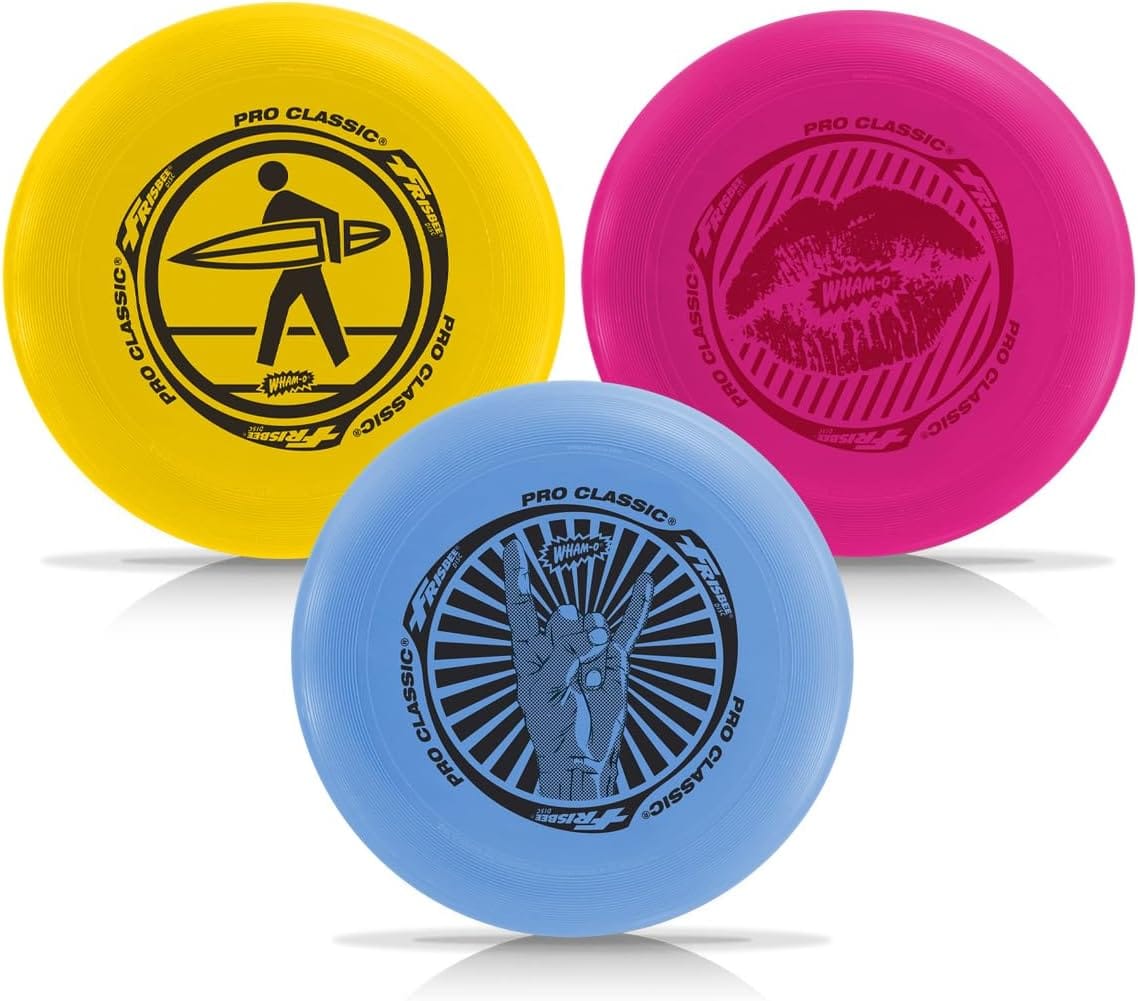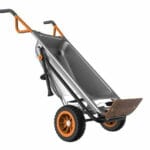Get ready to dive into the thrilling world of Wham-O Frisbees! In this ultimate guide, we’ll uncover the secrets of these iconic flying saucers, from their humble beginnings to their modern marvels. We’ll guide you through the different types, show you how to use them like a pro, and give you a sneak peek at what’s on the horizon for these beloved backyard stars. Whether you’re a seasoned frisbee fanatic or just a curious newbie, this guide will have you soaring with excitement!
The Wham-O Frisbee: A History of This Classic Outdoor Disc
We’ve all seen it, tossed it, or maybe even chased after it on a windy day! The Wham-O Frisbee: a simple disc with an uncanny ability to bring out the kid in all of us. But did you ever stop to think about how this iconic flying disc came to be? Let’s dive into the story of the Wham-O Frisbee, from its humble beginnings to its modern-day innovations.
From Pie Plates to Plastic Perfection: The Frisbee’s Origin Story
The Frisbee’s journey begins long before plastic discs took flight. As early as the 1870s, students at Yale University tossed around empty pie tins from the nearby Frisbie Pie Company, calling out “Frisbie” as they let them fly. This simple pastime would unknowingly plant the seed for a global phenomenon.
Fast forward to 1948, when Walter Frederick Morrison and Warren Franscioni, inspired by those pie-throwing students of yore, invented the “Flying Saucer.” This plastic disc, a significant improvement over flimsy tin plates, marked a turning point. People loved how it soared through the air, proving that the concept had wings (or at least, the potential for amazing spins).
Enter Wham-O, the company already making waves with the Hula Hoop. Recognizing the “Flying Saucer’s” potential, they bought the rights in 1955, initially renaming it the “Pluto Platter” to capitalize on the era’s fascination with space. However, upon hearing that college students were calling it a “Frisbie” after those pie-tin games, Wham-O made a clever move. In 1958, they officially rebranded the toy as the “Frisbee,” deliberately misspelling it to avoid any legal tangles.
Wham-O’s marketing genius, however, went beyond a savvy name change. They heavily promoted the Frisbee as a new sport, encouraging people of all ages to experience the joy of flight. This strategic approach paid off, transforming a simple disc into a cultural phenomenon and solidifying the Frisbee’s place in toy history.
A Frisbee for Everyone: Exploring the Wham-O Lineup
Over time, Wham-O recognized that one size doesn’t fit all when it comes to Frisbees. So, they expanded their lineup, crafting discs tailored to different skill levels and activities.
| Frisbee Type | Description |
|---|---|
| World Class | The gold standard for Ultimate Frisbee, known for its lightweight design and durability |
| Heavyweight | Ideal for windy days, offering stability and impressive distance |
| Pro Classic | A versatile choice for all skill levels, comfortable to grip and easy to throw |
| Freestyle | Designed for the pros, perfect for performing aerial tricks and routines |
| Fun Flyer | A budget-friendly option for casual fun, available in a rainbow of colors |
Beyond the Backyard: The Surprising Versatility of the Frisbee
While most of us associate the Frisbee with casual park games, it’s actually much more versatile than you might think! This humble disc has found its way into a surprising number of activities:
- Disc Golf: Think of it as golf, but with specialized Frisbees and baskets. This challenging and fun sport has gained quite a following.
- Freestyle: Ever seen someone do flips and tricks with a Frisbee? That’s freestyle – a captivating blend of athleticism and artistry.
- Dog Sports: Our furry friends love Frisbees too! There are even special discs designed specifically for canine athletes.
And let’s not forget how the Frisbee has become a cultural icon, making appearances in movies, TV shows, and representing those carefree summer days we all cherish.
More Than Just a Game: The Wham-O Frisbee’s Enduring Impact
The Wham-O Frisbee isn’t just a toy; it’s a symbol of connection, activity, and plain old fun.
- Bringing People Together: Whether it’s a casual game in the park or an organized Ultimate Frisbee match, this simple disc has a way of bringing people together.
- Encouraging Physical Activity: It’s a fun and engaging way to get moving, regardless of age or skill level.
- Sparking Innovation: The Frisbee has inspired entirely new sports, showcasing its ability to adapt and evolve.
What Makes the Wham-O Frisbee So Timeless?
There are several reasons why the Wham-O Frisbee has remained popular for decades:
- Nostalgia: For many, the Frisbee evokes fond childhood memories, creating a sense of connection across generations.
- Durability: These things are built to last! A well-maintained Frisbee can provide years of enjoyment.
- Affordability: It’s a relatively inexpensive form of entertainment, making it accessible to everyone.
- Simplicity: The beauty of the Frisbee lies in its simplicity. There are endless ways to play, limited only by your imagination!
Taking Care of Your Wham-O Frisbee: Tips for a Long Lifespan
To ensure your Frisbee stands the test of time, here are a few simple care tips:
- Cleaning: A quick wash with mild soap and water is all it takes to keep your Frisbee looking its best.
- Storage: When not in use, store it in a cool, dry place to prevent warping or damage.
- Temperature Control: Avoid exposing your Frisbee to extreme temperatures, as this can affect its shape and flexibility.
The Wham-O Frisbee is more than just a piece of plastic; it’s a reminder to embrace the simple joys of outdoor play. So next time you see a Frisbee flying through the air, remember the history, the innovation, and the pure, unadulterated fun it represents.
Outperforming the Competition: Did a Company Called Wham-O Invent the Frisbee?
[wham-o-frisbee]
While Wham-O played a pivotal role in propelling the Frisbee to international fame, the company didn’t actually invent the flying disc itself. The Frisbee, as we know it, has a rich and surprising history, with roots dating back to the late 19th century.
The Pie-Throwing Origins of “Frisbie”
The story begins in 1871 when William Frisbie established the Frisbie Pie Company in Bridgeport, Connecticut. Little did he know that his empty pie tins would become a source of entertainment for generations to come. College students, particularly those at Yale University, developed a tradition of tossing these tins around, yelling “Frisbie!” as they soared through the air. This simple pastime is believed to be the origin of the iconic name.
From “Flying Saucer” to “Pluto Platter”: The Pre-Wham-O Era
Fast forward to 1948. Walter Frederick Morrison, along with Warren Franscioni, patented a plastic disc they dubbed the “Flying Saucer.” This invention, inspired by those pie-throwing college students, marked a significant improvement over flimsy tins. Recognizing a good thing when they saw it, Wham-O acquired the rights to the “Flying Saucer” in 1955. Initially, they renamed it the “Pluto Platter,” hoping to capitalize on the public’s fascination with space exploration.
Wham-O Enters the Game: A Legacy of Innovation and Marketing Genius
Wham-O’s true genius, however, lay not only in recognizing a brilliant product but in understanding its potential. They cleverly rebranded the “Pluto Platter” as the “Frisbee” in 1958, tapping into the existing cultural awareness of the name and cleverly sidestepping legal issues with a slight misspelling.
The company’s marketing prowess was equally remarkable. They promoted the Frisbee as more than just a toy, positioning it as a sport for all ages. This strategy proved immensely successful, rapidly transforming the Frisbee into a beloved pastime and a cultural icon.
Ed Headrick: The Man Who Gave the Frisbee Its Flight
One name stands out in the history of the Frisbee: Ed Headrick. This visionary designer, working at Wham-O, patented the modern Frisbee design in 1967, introducing those iconic raised ridges known as the “Rings of Headrick.” These rings dramatically improved the Frisbee’s stability and flight distance, further solidifying its status as the ultimate flying disc. Headrick’s legacy extends beyond the Frisbee’s design; he is also credited with inventing Frisbee Golf in the 1970s, further expanding the Frisbee’s appeal and cementing its place in sporting history.
While Wham-O didn’t invent the flying disc, their contributions are undeniable. They took a simple idea, refined it, gave it a catchy name, and then marketed it brilliantly, transforming the Frisbee into a global phenomenon that continues to delight millions today.
Unlocking Wham-O’s Success: A Deep Dive into the Iconic Toy Brand
[wham-o-frisbee]
Wham-O, the name practically synonymous with classic toys and childhood memories, has been a powerhouse in the industry for over seven decades. But how did this company, founded in a humble garage, become a global brand synonymous with fun and innovation? Let’s dive into the secrets behind Wham-O’s enduring success.
From Garage Startup to Cultural Phenomenon: Wham-O’s Early Years
In 1948, Richard Knerr and Arthur “Spud” Melin embarked on their entrepreneurial journey in a South Pasadena garage, armed with little more than a slingshot and a dream. They named their fledgling company Wham-O, inspired by the sound their slingshot made upon release. Little did they know this simple name would soon become a household word.
Wham-O’s early years were marked by a string of innovative and, at times, outlandish products. They introduced the world to the Hula Hoop in 1958, igniting a global craze that saw millions of hoops flying off shelves. They followed this up with other iconic toys like the Super Ball, the Slip ‘N Slide, and the Hacky Sack, solidifying their reputation for creating toys that sparked joy and encouraged active play.
Facing Challenges, Embracing Reinvention
Like many companies, Wham-O has weathered its share of storms. Multiple ownership changes and increasing competition in the toy industry presented challenges. However, the brand has consistently demonstrated resilience and an uncanny ability to adapt.
Under the leadership of President Todd Richards, who took the helm in 2015, Wham-O has embraced a revitalization strategy that blends nostalgia with innovation. This approach involves leveraging the enduring appeal of classic Wham-O toys while simultaneously developing new products designed to captivate a modern audience.
“[What was] unique about Wham-O is that we made products that became toy categories of their own,” Richards stated in an interview. “We want to do that again.” This commitment to innovation is evident in Wham-O’s expansion into the booming pet toy market. Recognizing the special bond between humans and their furry friends, Wham-O now offers a line of durable and engaging toys designed specifically for dogs, proving that their understanding of fun extends beyond the human world.
Wham-O at 75: A Legacy of Play and a Bright Future
In 2023, Wham-O celebrated its 75th anniversary, a testament to the company’s ability to adapt, innovate, and remain relevant in a constantly evolving industry. They’ve achieved what few toy companies have: creating a legacy that transcends generations. From the iconic Frisbee, which spawned new sports and communities, to the Hula Hoop, which continues to inspire fitness enthusiasts, Wham-O’s impact extends far beyond simple playthings.
Wham-O’s enduring success can be attributed to several factors:
- A Deep Understanding of Fun: The company has an uncanny knack for tapping into the universal desire for play, regardless of age or background.
- Innovation and Adaptability: From the Hula Hoop to the Super Ball, Wham-O consistently introduces original concepts and adapts to changing trends.
- Nostalgia and Brand Recognition: Wham-O’s classic toys evoke strong feelings of nostalgia, creating a powerful connection with consumers.
- Focus on Active Play: In an increasingly digital world, Wham-O’s emphasis on outdoor fun and physical activity resonates strongly with parents and children alike.
As Wham-O looks to the future, one thing is certain: their commitment to creating fun, innovative toys shows no signs of waning. With a focus on pet products, sustainable materials, and collaborations with artists, Wham-O seems poised to remain a driving force in the toy industry for years to come.
Unleashing the Frisbee’s Furthest Flight: Your Guide to the Guinness World Record
[wham-o-frisbee]
When it comes to Frisbee throwing, distance is the name of the game for many enthusiasts. But just how far can one of these aerodynamic discs be launched? Prepare to have your mind blown as we explore the Guinness World Record for the longest Frisbee throw ever recorded.
David Wiggins Jr.: The King of Distance
The crown for the farthest Frisbee throw belongs to none other than David Wiggins Jr., who, on May 20, 2023, unleashed a throw that traveled an astounding 338 meters—that’s equal to 1,109 feet or over three and a half football fields! This remarkable feat, achieved at the annual High Plains Challenge in Fort Collins, Colorado, cemented Wiggins’ place in Frisbee history and showcased the remarkable potential of both human skill and a well-designed disc.
Factors Influencing Frisbee Flight: A Blend of Science and Skill
Achieving such mind-boggling distances isn’t just about brute strength; it’s a delicate dance between physics, technique, and a bit of good fortune.
- Disc Design: The modern Frisbee, with its iconic shape and those strategically placed “Rings of Headrick,” is a marvel of aerodynamic engineering. These features work in perfect harmony to maximize lift, reduce drag, and create stable flight.
- Throwing Technique: A powerful throw, while essential, is only part of the equation. Expert throwers understand the importance of spin, release angle, and even subtle adjustments to their body positioning to achieve optimal distance.
- Environmental Factors: Like any projectile, a Frisbee’s flight path is influenced by external forces, particularly wind conditions. A well-timed throw can harness a tailwind to add precious meters to the distance.
The Pursuit of Distance: A Never-Ending Story
While David Wiggins Jr.’s record-breaking throw may seem insurmountable, the world of Frisbee is no stranger to pushing boundaries. As disc technology continues to evolve and throwing techniques are refined, there’s no telling how far these flying discs might travel in the future.
Aspiring distance throwers are constantly experimenting with new training methods, analyzing the physics of flight, and seeking out those perfect conditions where a well-executed throw can soar to unimaginable distances. Perhaps one day, Wiggins’ record will fall, rewritten by a new generation of throwers determined to push the limits of what’s possible.
The Guinness World Record for longest Frisbee throw is a testament to human ingenuity, dedication, and the sheer joy of launching an object through the air. It’s a reminder that even in a world dominated by technology, there’s still a certain magic in the simple act of throwing and watching something fly.
What Was the First Frisbee Called? Unveiling the Pluto Platter
[wham-o-frisbee]
The Frisbee, that iconic flying disc synonymous with carefree fun and gravity-defying throws, wasn’t always known by its catchy, now-famous name. Before it dominated parks and beaches worldwide, the Frisbee had a lesser-known, but equally intriguing, moniker: the “Pluto Platter.”
1957: The Pluto Platter Arrives…and Nobody’s Calling It That
[https://www.lolaapp.com/] In 1957, Wham-O, the company already making waves with their wildly popular Hula Hoop, launched a new product: a plastic disc they named the “Pluto Platter.” Attempting to capitalize on the era’s fascination with all things space-related, they believed this name would capture the public’s imagination.
However, a funny thing happened on the way to market domination. While the “Pluto Platter” was a hit, a different name was already circulating on college campuses, particularly in the Northeast, where students had a long tradition of flinging around empty pie tins from the Frisbie Pie Company.
These students, upon getting their hands on the new plastic discs, naturally dubbed them “Frisbies” after their beloved pie-tin pastime. “[Students] would throw the empty pie tins to each other, yelling ‘Frisbie!’ as they let go,” explains a HISTORY.com article. The name stuck, spreading like wildfire through word-of-mouth, proving that sometimes, the best marketing is organic.
1958: From Pluto Platter to Frisbee: A Stroke of Marketing Genius
Wham-O, recognizing a golden opportunity, demonstrated their marketing savvy by embracing the name already gaining traction. In 1958, they officially rebranded the “Pluto Platter” as the “Frisbee,” deliberately misspelling it to avoid any potential legal disputes with the Frisbie Pie Company. This strategic name change proved to be a masterstroke, tapping into existing cultural awareness and propelling the Frisbee to new heights of popularity.
The “Frisbee,” now free from its planetary moniker, became a household name, synonymous with outdoor fun, friendly competition, and the simple joy of flight. The story of the “Pluto Platter” reminds us that even the most well-thought-out marketing plans can be outdone by the power of organic, word-of-mouth buzz and the influence of everyday people. It’s a testament to the fact that sometimes, the best ideas come from listening to the people who will ultimately be playing with your product.
- Sept 31 Myth: Unveiling Calendar Secrets - March 18, 2025
- How Long & Till December 18, 2025: Accurate Countdown Guide - March 18, 2025
- Discover Japanese Artists: A Complete History - March 18, 2025
















